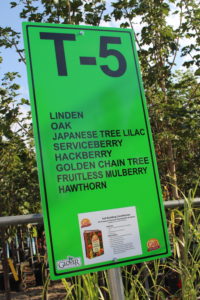Maintaining Relevance
As early as October 2007, I started connecting the dots on various economic indicators and consumer spending behaviors and began issuing some causes for concern to you on a down-trending economy’s potential impact on your business for 2008. The scary part is that, as ominous as things looked then, what has transpired into a literal economic meltdown is even farther reaching than even I had predicted.
Some of you have taken the time to write or call me, challenging that all of this alarm and naysaying is counterproductive: If I write about the crisis we’re all facing, it will become a self-fulfilling prophecy, and we will have a less than desired spring season. In rebuttal, the more than 25 years I’ve spent in retail have taught me that we should plan for the best but manage to the realities we’re presented.
Wishing the economy would be better especially for our industry or for your garden center accepting there may be a recession but electing not to participate, or hoping that our industry is recession proof is Pollyanna thinking. I’m charged, in my consultancy and in these columns, to communicate and deliver the unvarnished truth based on facts and my interpretive conclusions in essence, to be your reality check. You might not like or agree with my message based on your perspective, but I hope it will be a point of view that you can consider as you plan and manage your businesses.
You’ve read all the recent sales reports from retailers that cater to every demographic sector, from dollar stores and discounters to home-improvement chains and luxury retailers, and it’s clear that the current economic situation is adversely affecting every sector. The prognosis for a speedy reversal of these negative trends isn’t pretty. As I’ve stated before, almost 70 percent of the gross domestic product (GDP) is generated by consumer spending; consumer spending drives our economic engine. And, historically, what leads us out of recessionary periods is increased consumer spending.
The challenge we face is that consumers have to feel confident about their personal and economic futures before they start spending again. The University of Michigan just announced that its April measurement of consumer sentiment is the lowest it’s been since March 1982 a 26-year low and other consumer confidence reports show that it’s at a minimum of a five-year low. Inflation, energy costs, rising prices for life essentials and uncertain job security all contribute to this lack of confidence. Bottom line: Until consumers see some economic indicators that are positive and feel better about their personal financial futures, their confidence will continue to be low and they will continue to curtail their discretionary spending. And until they start spending again, our economic engine will continue to be sluggish.
But enough of the reality message.
A Unique Opportunity There are only three ways to increase sales:
1. Raise prices.
2. Sell more product more frequently to your existing customer bases.
3. Increase your customer base to attract customers who haven’t purchased from you before.
Raising prices to pass through higher input, production and transportation costs will increase sales dollars, but it won’t improve your profit dollars. And independent retailers are reluctant to raise prices for fear of being perceived as pricey when the consumer mentality today is so focused on price value. One thing to remember, however, is that an independent retailer will never be the lowest-cost provider; the consumer doesn’t expect this, and your overhead and operating costs won’t allow you to do so profitably. Be judicious, and provide real value that justifies the increase, and you have an opportunity to raise retails.
It’s been proven that the “lowest-hanging fruit” you have is your existing customer base. They have a track record with you and the products you offer, so there’s no acquisition cost associated with them. The key is to communicate compelling reasons to continue to shop your store.
Attracting new customers offers great potential, but this requires considerable investment to get them to walk over your threshold, even in a good economy when they have money to spend. Competition for consumer dollars today is stronger than ever, and the mass retailers have deeper pockets to advertise and a greater ability to promote price value.
But independent retailers have a unique opportunity to create something that the large retailers lack and can’t create: relevance. An IGC has the ability to become part of the fabric of a community, a part of the heart and soul of the everyday lives of its citizenry. In most cases, there’s minimal monetary investment required to develop relevance, but time and effort are critical to achieve and maintain it. And it doesn’t happen overnight; it’s something that is acquired over time through consistency, frequency and believability in your message.
Developing Relevance
There’s no magic formula you can follow to develop relevance; rather, the power of relevance is in crafting your activities and involvement based on the needs of your core customers in your particular community. It could be as simple as becoming the driving force in bringing your citizens, businesses and local government to work together in support of America in Bloom to build community spirit through horticulture and floriculture. It could be active participation in the Rotary, Lions Club or other civic organizations. It could be offering and conducting classes and events in your garden center to schools, Boy Scouts and Girl Scouts, or other kids’ groups. It could be sponsoring and hosting a fundraiser for the local hospital or volunteer fire department and providing raffle prizes. It could be giving gardening classes in senior citizen homes, showing them how to get involved with container or raised gardening beds. Only you can determine what’s important to your community and your customers, what role or activities you can provide that make you relevant to them.
It’s human nature that people gravitate to and shop at places they can relate to and they feel give back to their communities. You can’t buy relevance; it’s something that has to be earned and developed over time. In my experience, being relevant transcends the investment in pure advertising, transcends price image and is the make-or-break factor when a consumer has choices on where to buy the same product. Being relevant can be your competitive advantage that can touch your existing customers and provide the impetus for drawing new customers into your store; it’s a way for you to connect with your consumer.
Granted, you have to have the right product merchandised in an enticing environment, supported by excellent customer service, a good marketing plan and a strong image as the price of entry into today’s ultracompetitive retail marketplace. But these alone don’t answer the fundamental question: Are you perceived as a relevant and integral part of your community?
Relevance. It’s not the answer all by itself, but it just might give you the competitive edge you need in today’s challenging economy…


















 Videos
Videos





